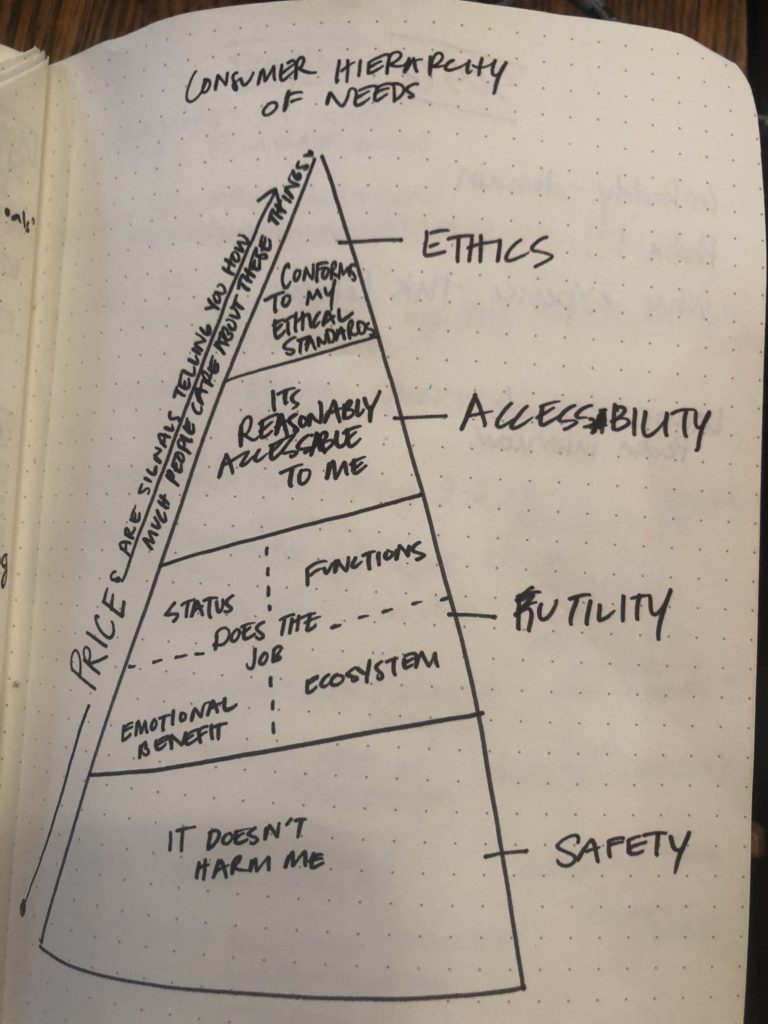A couple of months ago, I wrote an article for afaqs on the challenges for brands trying to remain relevant by stepping into “woke” territory. To summarise, being selectively woke is not an option. Every action by an organisation is scrutinised, and sometimes, scored! Both McDonald’s and P&G were in the “danger zone” of being viewed as more exploitative than empowering. The former even got called out by NAACP for not supporting workers. However, this post is not to belabour that point, instead I’d like to hypothesise on the long term impact on consumption and brand building.
1. Cosmetic proportions: We’re at level 1, and that’s where Fair & Lovely chooses to rename itself, or shaadi.com removes its filters. My cynicism tells me that the brand and the final user are both at the same level, in terms of how much they really care. I think what has actually happened is that brands have gotten smart at watching a sort of “Overton window” for mainstream adoption of a communication. And many of them have gotten the timing right. There’s a phrase I heard in a meeting recently that applies here – cultivated authenticity. Some customers have caught on to the virtue signalling and they are the small minority asking the questions, but more on that in a bit.
2. The business of brand: As Karthik rightly pointed out, brands exist to make money. And to quote Bill Bernbach, it’s not a principle until it costs you money. Hence, boycotting Facebook, to me, is virtue signalling once you look at multiple factors. We’ve seen this movie before. But it’s not going to be that easy when brands realise the cost of doing good. The R&D for sourcing materials and services in a way that doesn’t involve trampling human rights or the environment, making sure that salary and wages are fair, the non-predatory strategies for market domination and customer acquisition – none of this is going to come cheap.
And then there are collaborations. Say, the relationship with big tech – GAFA, all of whom are fighting their own demons – tax shelters, unfair employee practices, anti-competition moves, privacy, and so on. How many brands will say no to Facebook and Google for advertising, Amazon for commerce, Apple and Google (again) for presence in the app ecosystem? Not every brand has the wherewithal to be a Spotify or Epic. And what happens to entertainment tie-ups when an actor playing a character in a Marvel movie or a Netflix show either says something that offends a certain audience, or has skeletons tumbling out of his/her closet? What is the appropriate response for a brand when nations take antagonistic stances, nationalism gets into the debate and it is operating in both countries? Not easy, any of these decisions, and we’re seeing the beginning of all these. Stance can be quite a complex dance!
3. The complexity of consumerism: Supply can’t succeed if there is no demand, as Lakshmipathy Bhat points out in his post on the subject. There is a market for fairness products because fair privilege exists. (read) We live in a time when almost everything is treated like a political statement. Actors, sportspersons, artists and even stand-up comedians are held to the highest standards, but the nation’s institutions and their personnel get a bye. Maybe we don’t have a choice on the latter, so we take it out with cancel/call-out culture on the former. Many studies state that the younger generation prefers brands that espouse causes. For now though, I think the ‘we’, I think, is a minority. The diagram below, courtesy @faris articulates exactly what I think.

Which brings me to the paradox. The Fair & Lovely customer is buying the product precisely to access fair privilege. And Twitter warriors are anyway going to call the name change superficial. Like I half-jokingly said on Twitter, maybe HUL will now ladder itself up to “conceptual fairness” for this product. So who is this stance really for? I just chose this as an example, an equal number of tough questions will emerge for brands that choose to take a stance. Any stance.
At a broader level, it will be a long while before an individual consumer will have to justify his/her consumption vis-a-vis his/her public stance on social platforms. And we are all smart enough to justify these narratives to our conscience. Therefore, public posturing and calling out of brands by individuals wiltsl largely co-exist with consumption of the same brands! The consumer’s own woke narrative will continue, and the onus is therefore on the brands to make its choices. The lifecycle of a brand will inevitably get to a point when distribution strength, price efficiency and product commoditisation have been maxed out and the brand needs to play the lead role. Stand has great relationship with prepositions – stand for, stand against, stand on, stand with, stand off and so on, but I don’t think any of them can really be a stand-in for a brand proposition.
